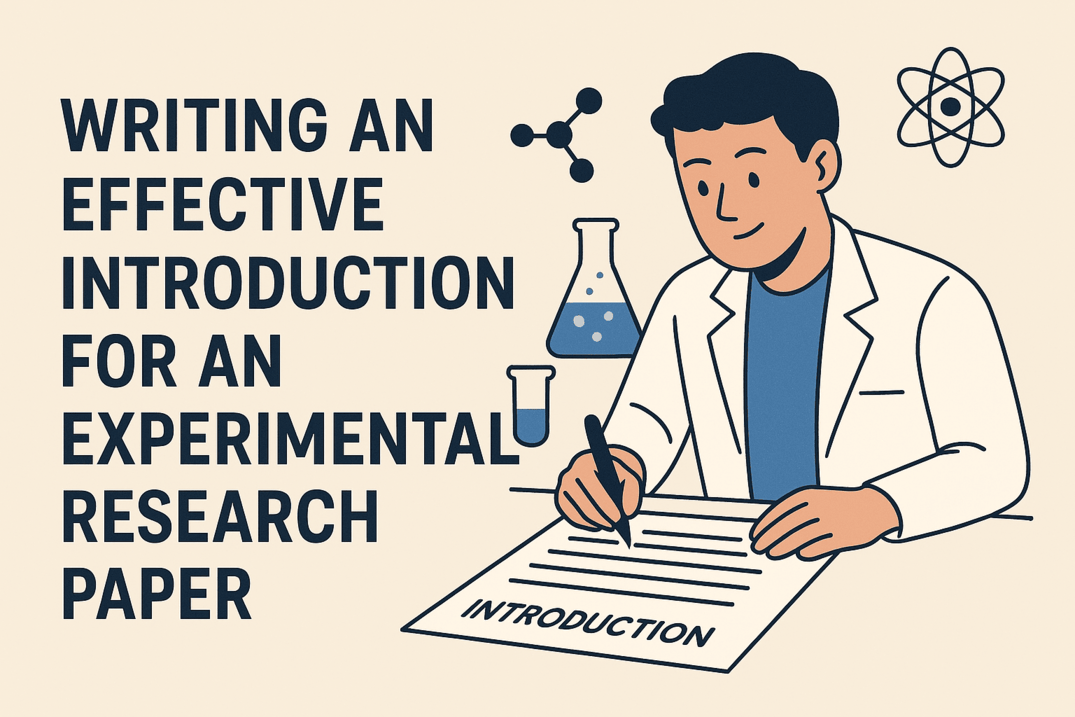Writing an Effective Introduction for an Experimental Research Paper

The introduction of an experimental research paper serves as a critical foundation, establishing the study’s context, rationale, and objectives. When crafted effectively, it enables readers to quickly grasp the significance of the work and its contribution to the field. Below is a structured approach to writing a compelling introduction that adheres to academic conventions.
1. Establishing the Research Context
The broader scientific field should first be introduced, followed by a focused presentation of the specific research problem. The background information provided must be sufficient to orient readers while avoiding unnecessary generality.
Example:
“Targeted drug delivery systems utilizing lipid nanoparticles (LNPs) have been extensively investigated as a promising strategy for metastatic cancers. However, the therapeutic potential of conventional LNPs has been limited by their rapid systemic clearance.”
2. Reviewing Relevant Literature
Key findings from prior studies should be synthesized to demonstrate the current state of knowledge. Seminal and recent works must be cited to establish credibility, though the discussion should remain concise and focused on identifying gaps.
Example:
“The ability of LNPs to enhance drug solubility has been well-documented (Z et al., 2022). However, their short half-life in vivo has been shown to necessitate frequent dosing, which has been associated with increased toxicity risks (Y et al., 2023). To address this, surface modifications such as polyethylene glycol (PEG) coatings have been explored, but immune responses to PEGylated particles have been reported as a significant limitation (W et al., 2024).”
3. Defining the Research Gap and Objectives
The specific gap in knowledge should be explicitly stated, followed by a clear articulation of the study’s objectives or hypothesis.
Example:
“In this study, a novel class of polysaccharide-coated LNPs was developed to minimize immune recognition while extending circulation time. It was hypothesized that these modifications would enhance tumor-specific drug accumulation in preclinical models of triple-negative breast cancer.”
4. Previewing Methodology and Significance
The experimental approach should be summarized briefly, emphasizing the study’s broader implications without delving into detailed methods.
Example:
“In vivo fluorescence imaging and pharmacokinetic profiling were employed to evaluate the performance of polysaccharide-coated LNPs. A 2.3-fold increase in plasma half-life was observed compared to PEGylated counterparts, with no detectable immunogenicity. These findings suggest that the proposed platform may represent a viable strategy for optimizing nanoparticle-based therapies.”
A well-written introduction not only contextualizes the research but also enhances its accessibility and impact. By clearly defining the problem, gap, and proposed solution, authors can effectively engage readers and justify the study’s importance.

